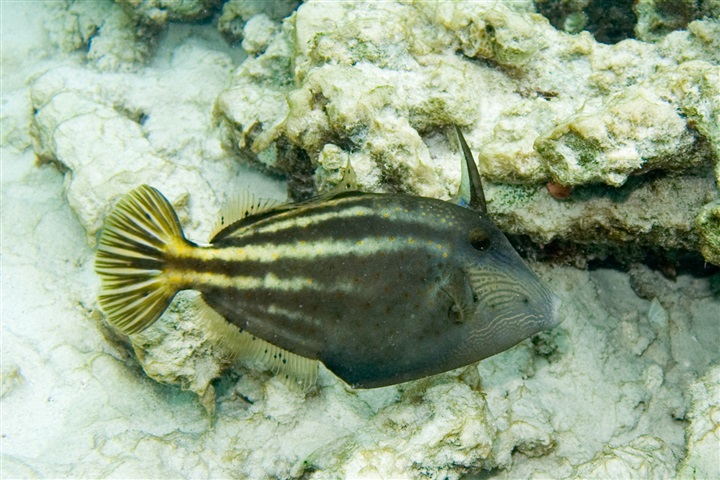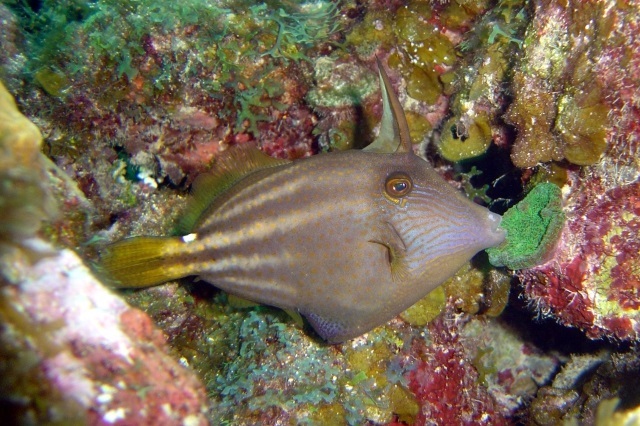Cantherhines pullus

| Latin name | Cantherhines pullus |
|---|---|
| Local name | Orangespotted filefish |
| Family | Monacanthidae - Cantherhines |
| Origin | The Mexican Golf, West Atlantic |
| Max length | 20 cm (7.9") |
| Minimum volume |
800 l (211 gal) |
|---|---|
| Hardiness |
Average |
| Suitable for aquarium |
Suitable with care |
| Reef safe |
Unknown |
| Aggressiveness | Unknown |
| Recommended |
Macroalgea (Eg. seaweed / nori) Microalgea (Eg. spirulina) |
|---|---|
| Mostly |
Small crustaceans (Krill, mysis, artemia...) Sponges Zooplankton (Cyclops, pods...) |
| Maybee |
Large polyp stone coral (LPS) Larger crustaceans (Shrimp, crabs...) Soft coral |
This species will eat shrimps, crabs, small bivalves, snails and the like.
There is little available knowledge of this species, so there can be important information missing on this page.
Filefish (Monacanthidae) have a very characteristic appearance, but whether one likes them or not is a matter of taste.
Some species are suitable for aquaria, although they will occasionally eat a coral or invertebrate. They are therefore not so well suited to coral tanks.
They are often used to fight glass anemones (Aiptasia) and Majano anemones. Pervagor nigrolineatus is especially good at this.
They need peace and quiet from both the aquarist and other fish, when adjusting to the tank life.
Be careful when catching them, as they easily becomes caught in the net.
Dave Wolfenden. 2013. Filefish: A bit of rough! - Practical Fishkeeping - (English)
Scott W. Michael. Can You Add Filefish to a Reef Tank? - Fish Channel - (English)
Bob Fenner. Filefishes, Family Monacanthidae, Part I, Part II, Part III - Wet Web Media - (English)
Scott W. Michael. Those Fabulous Filefish - Tropical Fish Hobbyist Magazine - (English)


